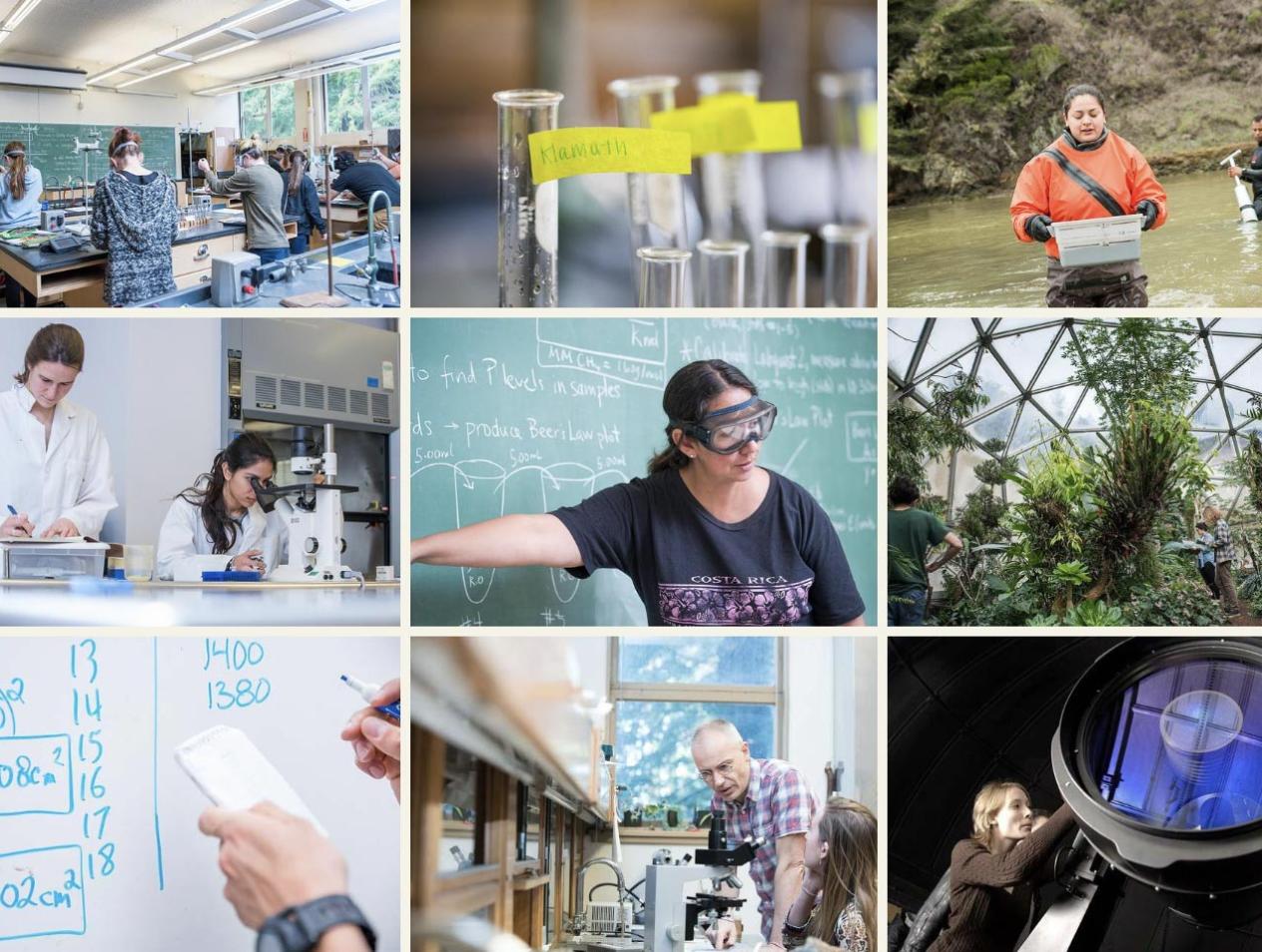Breadcrumb
Goal 2. Promote attitudes and activities that support inclusivity and equity
Objective 2.1 Attract and Support URG faculty, staff, and Administrators
| Performance Indicator | Baseline | Action Item |
|---|---|---|
| Diversify candidate pools for faculty, staff, and administrative searches | CNRS participates in training on implicit bias and advertises in | In a CNRS diversity plan, outline and implement processes to ensure |
| Percent of URG faculty, staff and administrators in the college | CNRS has not tracked these measures. | Track these and related measures (e.g., gender in some disciplines) in the context of a CNRS diversity plan. |
| No Opportunity gaps for URG faculty and staff in terms of professional development, release time or in-range progressions, starting salary, travel, start-up, and workload | CNRS has not tracked these measures, although the Office of Diversity and Inclusion has supported faculty of color with additional start-up funding of $5,000 per new faculty member. | Track these and relative measures in the context of a CNRS diversity plan. |
Objective 2.2 Facilitate Professional Development of student, faculty, and staff to create inclusive and equitable learning
| Performance Indicator | Baseline | Action Item |
|---|---|---|
| Rate of participation in campus events (e.g., Campus Dialogue on Race) or relevant professional development | Sixteen faculty (about 15% of permanent faculty) have completed the ESCALA training within the last two years. CNRS is typically well represented in campus professional development, but data have not been collected. | Promote more participation in campus events like the Campus Dialogue on Race, and record rates of participation annually. |
| Grants awarded that improve URG participation and success in STEM | The HSI STEM grant ($200,000 per year for 5 years) is in its third year. The active grant adds to the efforts of the past several years to support URM participation in STEM. | Track grant awards and annual investments in discipline-specific or college-wide efforts to improve the success of URG in STEM. |
| Budgetary support for programs like INRSEP, SACNAS, and others | INRSEP has been returned to full staffing (October 2018), with a Director, Associate Director, and Student Support Professional. | Quantify and track investments in these and related programs. |
Objective 2.3 Faculty deploy inclusive pedagogies and content in lectures, laboratories, and field trips
| Performance Indicator | Baseline | Action Item |
|---|---|---|
| Inclusive learning opportunities experienced by students in labs and classrooms, as captured through observations and surveys. | We have not surveyed students or collected anything other than self-reported data from instructors | In collaboration with ODEI and related groups, design and implement a process by which student experience of inclusive pedagogies can be measured. |
| Student sense of belonging in STEM, as measured through STEM-specific surveys and tools, such as MapWorks | In the Fall of 2018 a new survey of incoming freshman (3 weeks into the semester) was launched to evaluate students' self-reported senses of: belonging; connection with peers, faculty, and staff; engagement, efficacy, and motivation in STEM; and welcoming and community. Overall, the mean responses were each greater than 3.5 on a scale of 1 (low) to 5 (high). Gaps between URM and non-URM students were not statistically significant. For each of these senses, participation in PBLC corresponded to higher ratings for all student groups. | Refine and continue to administer the survey to first-time freshman students. Consider Expansion to first-time transfer students. Follow-up with a second time before graduation. Coordinate with OEI. |
| Content connects to culture so that students recognize the contributions from and impacts on their cultural contexts. | The PBLC curriculum includes a component of Traditional Ecological Knowledge, delivered in conjunction with faculty from the Native American Studies Department. By the end of Summer 2018, at least 16 faculty have become ESCALA scholars to learn to offer a more culturally responsive curriculum and to move from HSI-serving to HSI-thriving. | Continue culturally-relevant curriculum development as PBLC programs expand to serve all incoming CNRS students. |
Objective 2.4 Eliminate Opportunity gaps for all students
| Performance Indicator | Baseline | Action Item |
|---|---|---|
| Opportunity gaps in CNRS Courses | In 2017-2018, out of 202 course sections which had at least 10 URM students and 10 non-URM Students, The gaps (% successful Non-URM - % successful URM) for the courses are distributed as follows: 55%: less than 5% gap (some are negative) 18%: above 5%, but no larger than 10% gap 27%: more than 10% gap | Identify courses by department with large opportunity gaps (> 10%) and encourage faculty curricular and pedagogical improvements. |
| Participation rates | In Fall of 2017, the % of CNRS majors was 36% URG students, compared with total HSU Enrollment at 43% URG students | Facilitate Departmental Diversity Plans in the next round of program review. |
| Retention and Graduation rates in CNRS | The fall 2017 data indicates the following gaps: (Non-URG)-(URG) Retention 1 year: 1.7% 2 year: 10.2% Graduation 4-year FTF graduation: 14.6% 6-year FTF graduation: 18.5% | Facilitate Departmental Diversity Plans in the next round of program review. |






